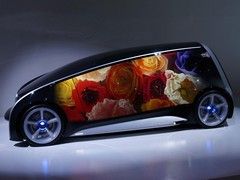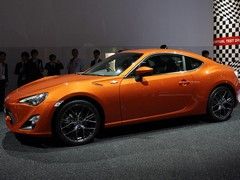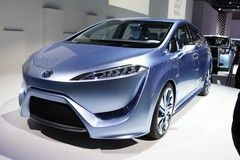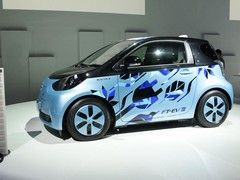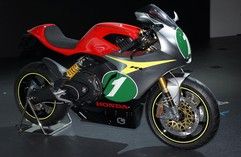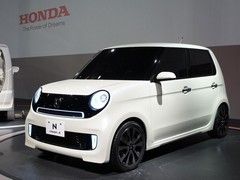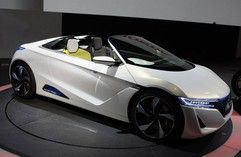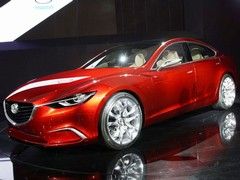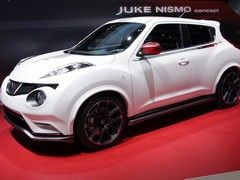Feature: Tokyo Motor Show 2011
Our man in Japan reports in, proving there's more going on in Tokyo than the launch of that Toyobaru
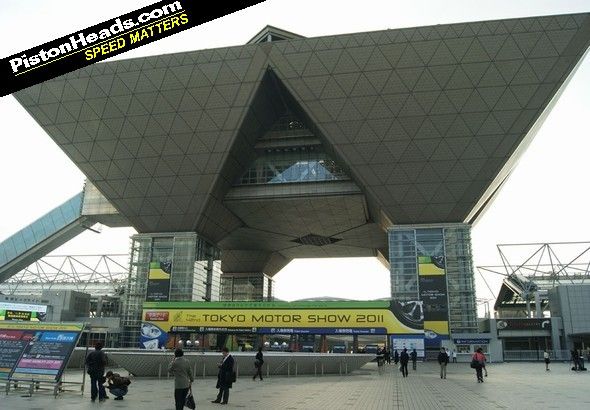
There's a wave of revival running through the Japanese car industry. It has realised it was becoming too dull, as happens during a recession, and then it was hit by first the east-coast earthquake and then the floods in Taiwan, where many suppliers have factories. So the industry is fighting back, and cars to engage the driver are back on the agenda.
"If a car is not fun, it's not a car," said Toyota president Akio Toyoda at the Tokyo show. He is determined to re-ignite younger buyers' interest in cars: "They go, they stop, they turn and they connect," he says of the cars Toyota is planning to achieve this aim.
One such is a concept car called Fun-Vii (Fun Vehicle Interactive Internet). If it all works as its creators imagine, this three-seater electric sports coupe can display any image on its complete surface as sent to it from a smartphone, and its sat-nav system's instructions come from a 3-D hologram of a speaking woman. It could link to other Fun-Viis or exchange data with them.
'Fun to drive, again' is Toyota's new slogan, and the idea is that it will apply to all Toyotas and not just the sporting ones, of which the GT 86 is the obvious new example. Another Tokyo Toyota debut was the FCV-R, a family-size fuel cell car with two hydrogen tanks for a decent range and a compact fuel cell stack to improve space. Its walrus-like face is said to improve aerodynamics.
The FCV-R enters limited production in 2015, fuelled by hydrogen that's an abundant by-product of Japan's industry. There's enough to power five million fuel cell cars, apparently.
Finally, the Toyota iQ took on its third guise as the FT-EV III, an electric version showing the trapezoidal nose treatment that is to become Toyota's rather Ford-like new face. Its range is said to be about 65 miles, but there's no word on an Aston Martin version.
Honda
Aside from the N-BOX range, three square micro-MPVs and a neat hatchback inspired by the 1960s N600, the main news was the EV-STER electric sports car. This miniature two-seater has rear-wheel drive and vertical handlebars, plus a part-carbonfibre structure and the usual internet connectivity. It's good for about 100 miles before a sub-3hr recharge, although not at the 100mph top speed. The 0-37mph time is 5.7sec so it's not exactly quick. Production is unlikely in this form, but a petrol-engined version would make a great latter-day Honda Beat.
Mazda
Suzuki
Sometimes a show star comes from nowhere, and the Suzuki Regina is it.
With shades of Panhard and Citroen Bijou in its styling, the 800cc hybrid with CVT transmission weighs just 730kg and is very aerodynamic. CO2 output is 70g/km, and far from being just a concept it's a pointer to Suzuki's next global compact car.
Suzuki, meanwhile, is trying to extricate itself from its disastrous and fruitless collaboration with Volkswagen by buying back the shares that VW holds. "'You don't go into a Sumo match and expect not to win," said executive vice-president Osamu Honda (no relation, probably).
Nissan
Major Nissan interest centres on the official arrival of the Nismo performance brand in Europe, beginning with a Nismo-enhanced Juke. Tokyo also saw a Nismo-bodykitted Leaf and a Leaf-based Nismo racing coupé, but the main interest was in Pivo 3, the third in a series of urban microcars able to manoeuvre in unfeasibly tight spaces.
Pivos 1 and 2 had a body section able to swivel round 180 degrees and wheels able to steer so much that the car could rotate in its own length. Pivo 3 is more normal but still has extreme four-wheel steering for a four-metre turning circle. It seats three, has an electric motor in each wheel and could yet make production.
The handsome Esflow electric sports coupé, revealed at Geneva, made a reappearance, promising a 150-mile range and 0-62mph in under 5sec. Despite having the proportions of a front-engined car, it has two mid-mounted motors driving the rear wheels.
Stay tuned for further updates on Subaru, Suzuki, Volkswagen and more...
Gassing Station | General Gassing | Top of Page | What's New | My Stuff

